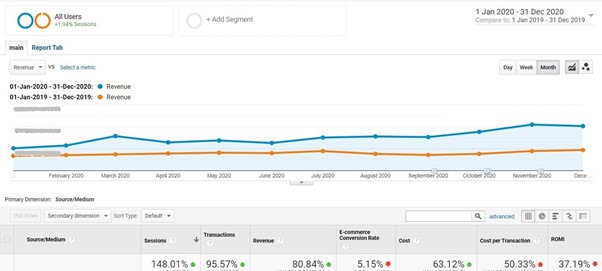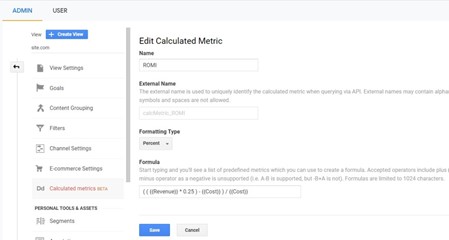Click here to get this post in PDF
How has eCommerce changed in the last year?
During 2020, one of my eCommerce projects increased by 80.84 % compared to 2019. On the other hand, the expenses doubled by 63 %. We hired new employees really quickly, and our accounting department was astonished with the numbers.
Generally, there has been a significant increase in sales among online stores worldwide over the last year. According to CNBC, the Black Friday 2020 sales grew by 22 %. In total, the global Retail market expanded by 27.6 % and reached $ 4,280 trillion. These are some impressive numbers, aren’t these?
Hello! My name is Ihor, and I have been assisting people in developing small and medium-sized online stores since 2011. In other words, I’m a digital marketer. In this article, I share my experience about expanding online stores. Learn how to reach more and keep what you’ve already gained!
The main challenges to eCommerce growth remain the same
For ease of understanding, I want to outline the basis first. There are a lot of different challenges, but let’s focus on the three main ones. In my opinion, they are the most important.
#1 Marketplaces
Amazon, Alibaba, Walmart – these are just the widely known “monsters” that take over your part of market. Some entrepreneurs try to enter these marketplaces and reduce their margins, others invest more money in ads and have lower margin profits as well.
#2 High competition in the field
This challenge looks similar to the previous one. The number of specialized online stores that enter your market is increasing all the time. Not all of them succeed, but they definitely take a part of the sales.
#3 Expensive advertising
The first two reasons lead to the third one – expensive advertising. Everyone knows that Google Ads operates on the principle of auction: the one who pays more for a click gets in the first place. That is, the bigger the number of players, the higher the price.
How not to lose sales and keep growing?
Stick to one specific area
Back in 2008, I worked as a product manager and was responsible for the development of the Furniture Accessories line. I was an inexperienced “kid” thrown into the most failing line of the company. Right at the beginning my manager gave me some very good advice: choose only one product that can compete in the market, focus on it and promote it; then expand the assortment.
And so I did: I started promoting a particular type of aluminum profile, then sold off the other remnant products and began restocking. Though I failed to develop the line, I didn’t forget the manager’s advice.
Here’s another example. Recently, I had been restoring my parents’ old armchairs. I had to buy some foam rubber, but I knew nothing about the types of foam rubber for furniture. Looking for the information on the Internet, I found a useful article on furniture restoration. The article was written by a company that specialized in materials for upholstered furniture. As a result, I became their customer.
Conclusion
Under an extreme competition, focus on one particular area of business. Do not expand product range. Be an expert in one area, and customers will come to you. Knowing that you are an expert, they will listen to you and trust you.
Optimize your service as much as possible
This is a stumbling block for many stores. It’s likely that some of you experienced poor service when buying on the Internet. What you need to do in this aspect is to dedicate 30 % of your efforts to improve the service all the time.
Some time ago, I worked as a marketer in an online pet store that sold its products only via the website. The store has five stars in Google Customers Reviews and always gets positive reviews. Here’s one of the newest reviews:
“For many years I’ve been buying goods for my cat only here, and I’m absolutely happy with the service. And Dasha from client support service surprised me the most. I looked for scratching posts without a base, but no store had any of these available. I asked Dasha about this as well, and she contacted the supplier and in a few days I got the desired item at a friendly price. I’ve never experienced this level of customer support! Dear managers, please consider paying Dasha some bonuses and promoting her to a higher position, because such employees are like gold, please don’t lose her.”
What are the reasons behind such high rating?
- The corporate culture encourages every employee to help the customer as much as possible.
- The website contains only updated information about availability and prices of the products. Also, the website is synchronized with ERP software.
- The contact center manager constantly monitors the most popular customers’ questions. Based on this, ready-made answers for contact center specialists are created. This eliminates the situations in which you hear the answer “Let me check this information. I’ll be right back to you soon”.
- All the orders are processed automatically. A contact center specialist will call you only if you ask for this in your order, or if any critical situation occurs.
- A special app for delivery couriers shows the best directions automatically. The customers receive messages about the approximate time of delivery to within one hour.
- The website contains tools for tracking and analyzing the visitors’ behavior. It helps to improve the website to make it more user-friendly and intuitive.
How to use marketing tools effectively?
In this section I’d like to share my experience in using promotional tools. I used to customize all the ads by myself some time ago, so I know how the things work. Surely, I’m not insisting on using only these methods. So, here we go!
Google Ads
Focus on advertising campaigns with high ROMI index only. How do you calculate an accurate ROMI for each campaign? Well, I guess there is no single solution. So I chose another way: I set up Calculated Metrics in Google Analytics using the formula below:
( ( {{Revenue}} * 0.25 ) – {{Cost}} ) / {{Cost}}
with “0.25” being a margin – the average value provided to me by the finance department. Obviously, this information is not perfectly accurate, but the whole setup takes just a minute and is totally free.
SEO for the website
Search engine optimization generates ~ 25 % of profit. It also compensates for the search advertising perfectly when the budget in Google Ads expires. So my advice is to focus on promoting the most profitable categories of products first. Once you cover this aspect, launch the rest of the product range. Besides, remember to optimize the load speed and the mobile responsiveness.
Content Marketing and YouTube
Always start a blog. It should become a Wikipedia on the topic of your business. Make sure to publish high-quality and informative articles that will answer all the questions about your field. This will raise your rating and show your expertise to potential clients. Even if a visitor of your blog doesn’t buy anything, he or she will recommend you to their friends, who will certainly buy some of your products.
How is YouTube related to this? You can shoot short videos for each publication. Publish them with the articles, and promote them on YouTube. You can do the same on other platforms as well, e.g. SoundCloud.
Social media
Every company that I worked for had a flawed SMM strategy. Why was that? Because they published the same materials in every media. But content for Facebook, Instagram and Twitter is supposed to be different. My advice is the following:
- Facebook: Publish content with more text to encourage readers to start discussions. It can be a brief review of a new article in your blog or a new item in the product range.
- Instagram: Your content strategy should be based on high-quality graphic content: creative photos, videos, stories, animations, etc. This social media is designed for such things.
- Twitter: If your audience uses Twitter, I recommend posting short news, e.g. “Wow! Just got a new product from our supplier! A detailed video review is coming soon. Subscribe to our newsletter or YouTube channel to keep up with new videos!”
Email marketing
It is a complex but very useful eCommerce tool. When starting work on a project, I analyze the following aspects:
- Sources of newsletter subscriptions with special attention to paid channels.
- Newsletter groups that have been formed. This is a really important point, because each group requires different content.
- Trigger emails that have been set up. E.g., welcome emails for new subscribers, birthday greetings, etc. In case they have been already used, I check how they work and what are the results.
- I also check the way in which special offers and news are delivered. First, I look at the frequency of newsletter sending, the content and the results.
I hope this article will be useful for you and your business, and wish you every success!
Ihor Kovsher, digital marketing manager at FiduciaSoft.
You may also like: Strategies for Your eCommerce Shop to Reach More Customers



